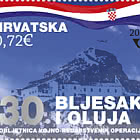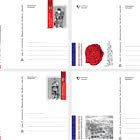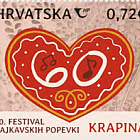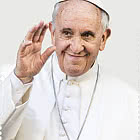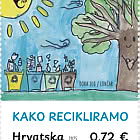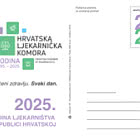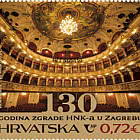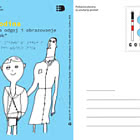Easter, the greatest Christian holiday, sums up the whole idea and hope of faith. The hopethat the life does not terminate on Earth or in earth, in this one dimension in which we are captured, or in the realm of matter. Continuance has been promised to us, the consequence of all our causes, of our goodness and our evil. Transformation has been promised to us and all which surrounds us has been given to us as a book of comparisons. The nature which hibernates, which invisibly matures, which wakes up returned into light and warmth. The death of the Son of God which opens the closed transition. And, as Easter is the greatest holiday of Christianity, so is the transformation through mass the central moment of Christian ceremony and continual keeping of promise – that collision between dimensions, that transformation of matter into the essence of the other world. In that act, most probably, tremendous energy is released, of which hardly are aware even those who release it without deep fear and deep humility. Symbolic elements of the ceremony are bread and wine – transformed into God's body and blood (the notions are adapted to the level of our understanding). The bread is then a basic matter of comparison, the food of human subsistence acquired through work, investment of life energy. Bread is a summary of human's earth. Bread has always been sacred (long ago the older people thought the younger ones to pick up and appreciate each its crumb which would occasionally fall on the ground).
In difference to yeastless bread from the Old Testament – which has survived in the New Testament's host – the bread of renunciation and offering, the domestic, festal, Easter bread is the bread of pure joy. It is yellow as a new-born chicken, from generously used eggs, soft and fragrant, coated with light lacquer of the egg-white. Once, the Mediterranean area and today the whole world, used to mark the days of Easter by Easter cake, with cracks and swellings that instantly reveal workability and softness. Just along our Adriatic coast this Easter baking has about forty different names – and it certainly remains for the science to discover more of them. Along with Easter cake or cheese cake the best known Easter baking is the braided bread. It can remain straight, unbent, but can also be bent into wreath shape– as on this year's Croatian Easter stamp. In various variants eggs can be put on the wreath – Easter eggs – one in the middle or more of them all around. It is interesting to mention that the braided bread is sometimes a by-product of the Easter bread: the remainder of pastry is braided into a small wreath and decorated with an egg – for kids. This custom is mentioned in the town of Split and presents in its own way a contribution to knowing the civilisation of childhood.
Braid is a motif which lasts long in human history – it could even be said that it is here from its very beginning. Its origin is for sure in handling the filament, the thread - be it in the first shaping of clothes, in cuts on ceramics or in taming hair. Rarely has any motif in history like the braid motif migrated from one medium to the other, from antique mosaic into the late antique or early medieval interlace in stone, from stone to paper or textile, from all of that into pastry … When we eat the braided bread we do not even think how much of the history we have swallowed. At least for once it is very tasty and joyful. And it can also be decorated with olive branches or leaves, as on this stamp - in order to promise the same what those branches promised on the occasion of Jesus’s entry into Jerusalem. And what did they promise? Yes, pain and death. But not as something final. For, everything is followed by resurrection – Easter comes, and this home joy and its requisites are the company to its always recurring promise.









